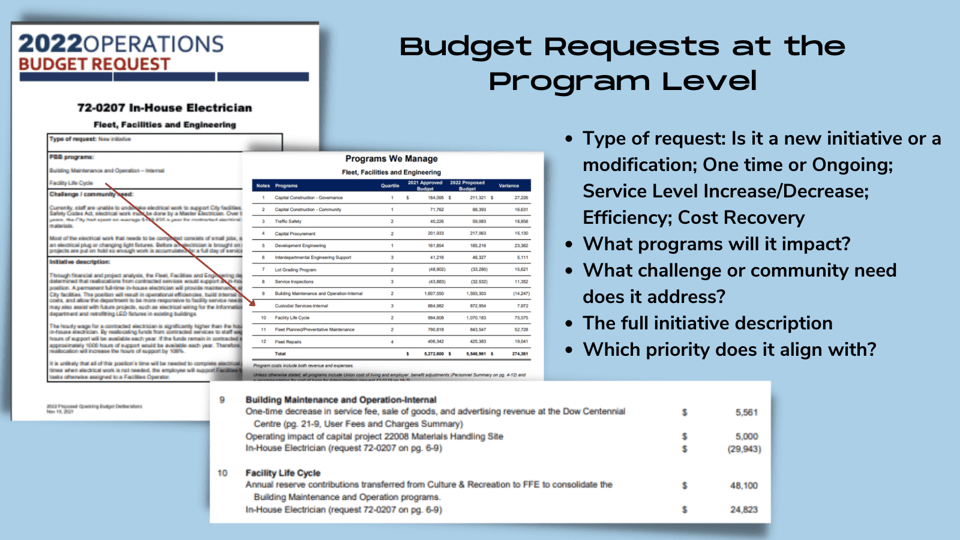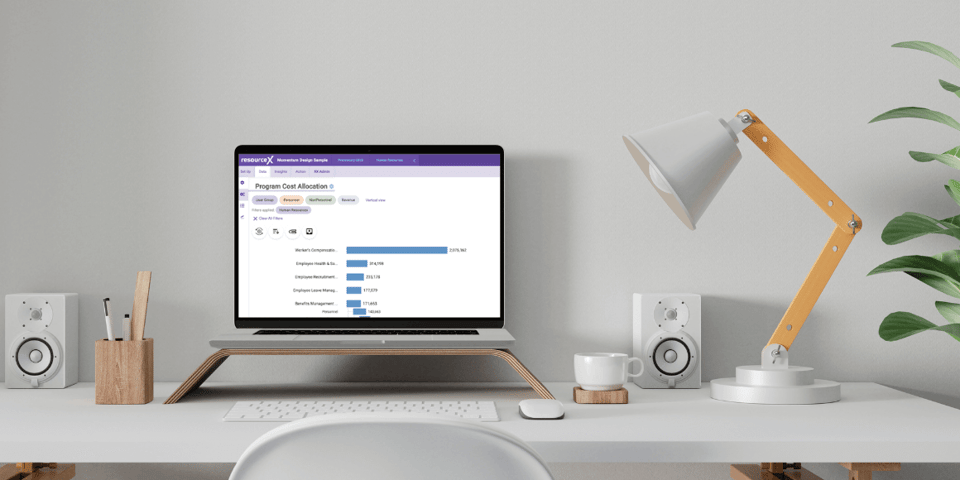When a caregiver attends a city council meeting to ask the council to explain why childcare costs keep increasing, what if—instead of rattling off a list of line items that mean nothing to the caregiver—the councilor clearly identifies exactly what resources go into providing the child care program and where costs have risen?
If you’re the caregiver in this scenario, you get reassurance that the price increases aren’t arbitrary and that public funds are being used appropriately. If you are on the budget development side of the table, you now have qualitative data that demonstrates how the budget’s resource allocation aligns with the needs of the community.
Making the Case for Priority-Based Budgeting
Government spending is a perennial hot-button topic, especially at the state and local government levels where budgeting decisions have a direct impact on the well-being of the community.
To ensure the needs of residents and local businesses are being met, many state and local governments are shifting away from traditional line-item budgets to priority-based budgets that put focus on programs instead of departments.
A priority-based budget (PBB) is organized by service area rather than by line items and objects of expenditure. This approach is much more effective in addressing the priorities and needs of a community because viewing the budget through a programmatic lens provides insight into exactly what the government does—and how much it costs.
When there is a broader understanding, visibility, and accountability for how public funds are applied, it’s easier for budgeting teams to identify wasted and underutilized resources and reallocate them where they will be most impactful.
Unlike department-level line items, programs are meaningful to residents and elected officials because they are directly relevant to their experiences. Using programs to give context to budgetary items allows finance teams, government officials, and residents to speak the same language and align resources with priorities.
Understanding Program Data
Program data is the cornerstone of PBB. It provides context and insight for better budgeting decisions and creates opportunities to provide services in new and alternative ways.
Defining program data provides clear visibility into:
- The services you provide, presented in a way that is understandable to all stakeholders.
- The cost of delivering services, including personnel, non-personnel, and revenue line items.
- How services align with your community's vision and strategic priorities.
In short, program data confirms the value of a service to the community. This lets government leaders make well-informed budgetary decisions based on the most current information rather than the previous year’s budget.
How a Program Budget Template Can Improve Your Budgeting Process
A program budget template can help you create a roadmap for how to apply your program data to solve your community’s specific challenges.
One example is ResourceX’s PBB BluePrint, a framework that uses program data to evaluate options and alternatives for resource allocation, identify ways to optimize current resources, and explore opportunities to create new revenue streams.
Using PBB Blueprint, when you receive a budget proposal for a service-level increase for a specific program you can answer critical questions about the program, including:
- How does this program align with community priorities?
- What is it going to cost to make it happen?
- Can we reallocate existing funds to cover the cost?
- Does it provide an opportunity to generate new revenue that can offset the cost?
Additionally, the ResourceX OnlinePBB budgeting platform includes an inventory builder that pre-populates programs and associates relevant line items. This enables you to easily connect program costs with strategic outcomes and measure the impact of budget reallocation on other programs.
Because this data is presented in a format that everyone understands, residents and decision-makers can look at a budget request and see immediately that a service-level increase improves playground maintenance, rather than having to connect all of the line item components that go into that maintenance.
Cities Put Programs Front and Center with PBB
The ResourceX 2022 Impact Report is an excellent resource for state and local government leaders who are looking for validation that cities are seeing real and measurable results from their PBB implementations.
Here are two notable examples of how PBB can transform the public sector budgeting process.
Fort Saskatchewan
The city of Fort Saskatchewan, Alberta implemented OnlinePBB to improve its operating and capital budgeting process.
City leaders used the platform to evaluate more than 200 unique programs and capital project options to identify which programs provided the most value to the community and taxpayers. This allowed them to allocate resources appropriately.
Priority-based budgeting has had such a positive impact that city leaders now present their annual budgets program-first and relegate line items to an appendix for reference.
Beach Cities Health District
The Beach Cities Health District (BCHD) implemented PBB for the 2021-2022 budget year. The district began by identifying and inventorying all of its programs and services, including expenses and revenue.
The district then scored and ranked each program and service against defined attributes and assigned a priority for the FY22-23 budget cycle. This program data was then used to align programs and services with health priorities and articulate why the services were offered, how much they cost, and what value they provided to the community.
Program Data Brings Context and Insight to Government Budgeting
PBB is gaining momentum as more state and local governments look for ways to allocate budgets for the greatest impact. Program data templates help streamline the budgeting process by answering key questions and defining a clear pathway to action.
Download the 2022 Impact Report to learn how priority-based budgeting helps provide context and insight to the budgeting process by switching the focus from line items to programs and outcomes.








